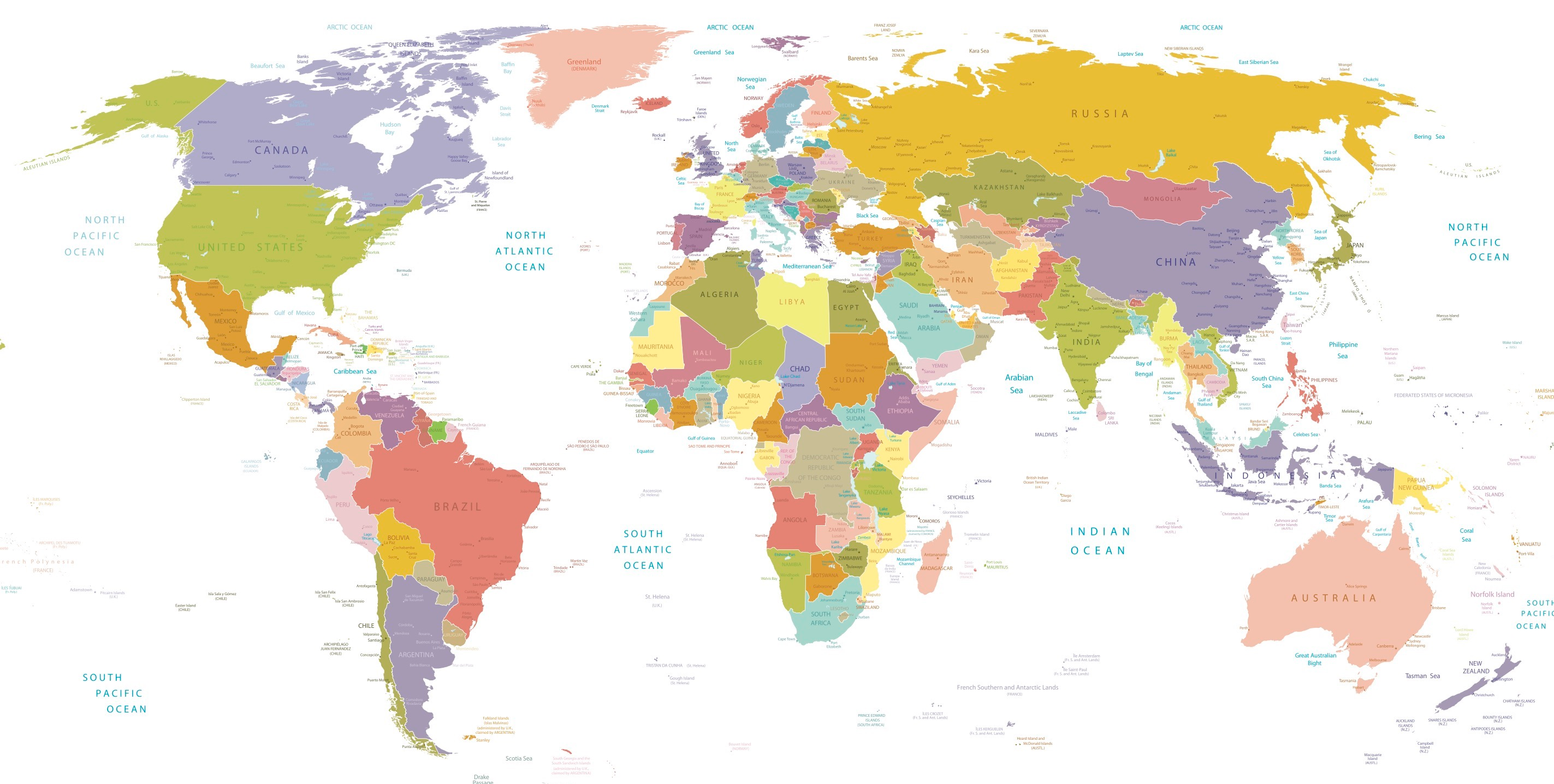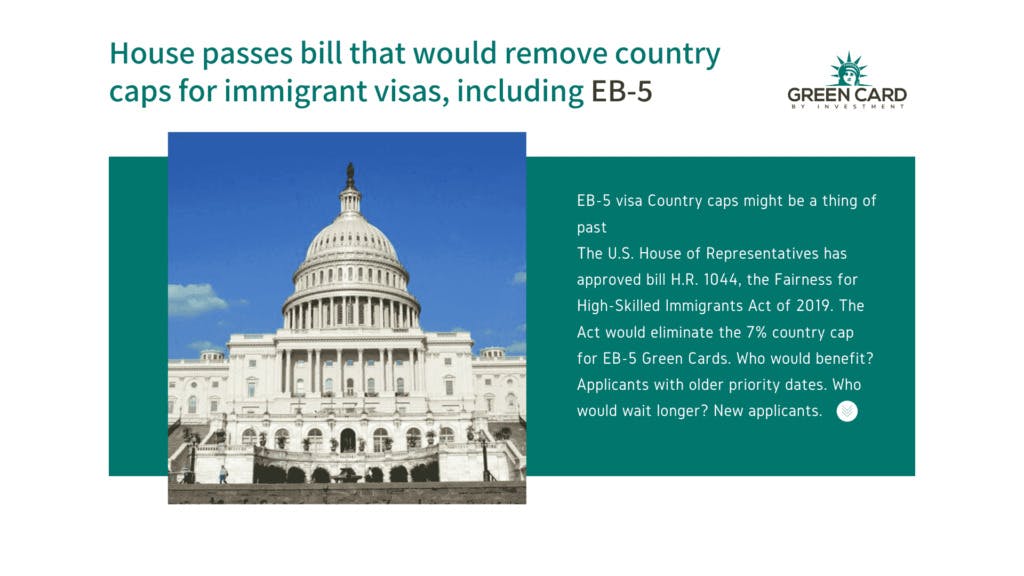EB-5 Visa Country Caps Might Be A Thing Of Past
The U.S. House of Representatives has approved bill H.R. 1044, the Fairness for High-Skilled Immigrants Act of 2019. The Act would eliminate the 7% country cap for EB-5 Green Card. Who would benefit? Applicants with older priority dates. Who would wait longer? New applicants.Bill H.R. 1044, passed with bipartisan support in a 365 to 65 vote. The Act would implement a transition period of FY 2020 to FY 2022, during which time a percentage of EB-5 visas are reserved for individuals not from the two countries who have the largest number of EB-5 visas.To quote the bill itself, the transition period would be as follows:“For fiscal year 2020, 15 percent of the immigrant visas made available… shall be allotted to immigrants who are natives of a foreign state or dependent area that is not one of the two states with the largest aggregate numbers of natives who are beneficiaries of approved petitions….For fiscal year 2021, 10 percent of the immigrant visas made available… shall be allotted to immigrants who are natives of a foreign state or dependent area that is not one of the two states with the largest aggregate numbers of natives who are beneficiaries of approved petitions….For fiscal year 2022, 10 percent of the immigrant visas made available under each of such paragraphs shall be allotted to immigrants who are natives of a foreign state or dependent area that is not one of the two states with the largest aggregate numbers of natives who are beneficiaries of approved petitions….”The group of unreserved visas would have a cap of 85% of applicants from any one country.These numbers can be confusing, especially in FY 2020 (when we deal with the number 85% in two separate instances). Think of two blocks of visas with the smaller block reserved for investors not from China or Vietnam (the two countries with the most approvals).The bigger block of visas, unreserved and available to investors from any country, can never have one country take up more than 85% of that number.Broken down, here is the limit of visas Chinese investors can take in the transition period:- FY 2020 72.25% (85% Chinese maximum of the 85% of unreserved visas)- FY 2021 76.5% (85% Chinese maximum of 90% of unreserved visas)- FY 2022 76.5% (85% Chinese maximum of 90% of the unreserved visas)The Senate’s version of The Fairness for High-Skilled Immigrants Act, called S.386, is notably different from the H.R. 1044 in that it does not have such a transition period. S.386 is making progress with 34 co-sponsors at the time of this writing.EB-5 expert Suzanne Lazicki, who often rigorously studies processing statistics, has analyzed what the Fairness for High-Skilled Immigrants Act would mean to the industry: “I suspect that the bill is mainly popular for its nice title — fairness for high-skilled immigrants — and that few people have undertaken the extraordinarily difficult task of reading it and thinking through the practical effects.”
EB-5 Processing time change
If country caps are eliminated, and visas are issued simply by priority date, here are some of Lazicki’s predictions in terms of practical effects:New EB-5 applicants would have to wait 7.4 years. This assumes there are already 74,000 EB-5 investors and family members already in line, divided by the yearly quota of 10,000 visas.Past Chinese investors would have 3-5 years reduced from their wait times.Indian investors with priority dates in 2017 and earlier wouldn’t see much change; Indian investors with 2018-2019 priority dates would see a 3-4 year increase in wait times.Vietnamese investors with priority dates in 2016 wouldn’t notice a significant difference; Vietnamese investors with priority dates in 2018-2019 would experience a 2-3 year increase in wait times.Past investors from the rest of the world would have 3-5 year delays.Future investors from anywhere in the world would wait 7-8 years.See Lazicki’s blog for her full analysisSee the text of bill H.R. 1044





